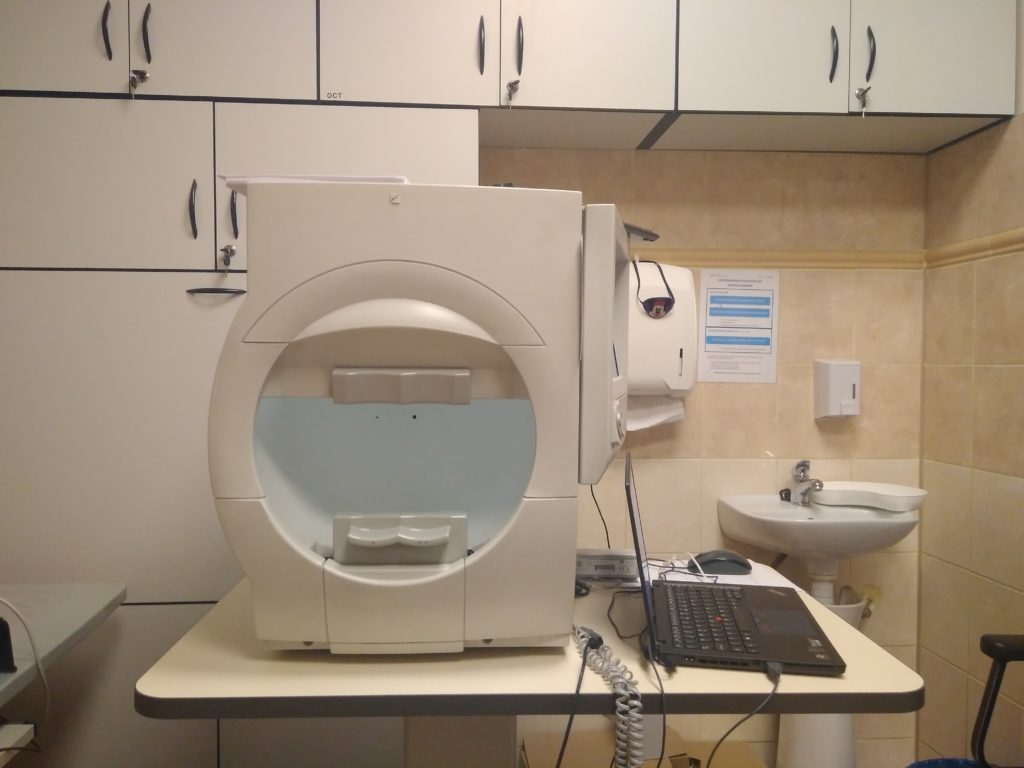Brief
Next story I would like to share is related to medical engineering. In the winter of 2020 I was asked to solve following problem in an optician’s clinic. There is a medical examination, called visual field test. You can take it to help diagnose glaucoma. In the clinic, the test performs Humphrey 735, an old device produced by Zeiss. It does is old, because the only way to print results is use aged centronics interface, that is, parallel port. So, in the beginning, every doctor had to print test results and also scan it due to medical documentation regulations. I don’t need to mention that not only it was very inconvenient, but also dependent on the same-aged printer, able to communicate via centronics.

I had to find whether it’s possible to somehow place interceptor device able to store printing data as PDF or the other digital format.
Research
Engineering for medicine purposes is fairly complicated problem. You need to twice efforts because in this production environment we deal with human health. I wanted to complete this project rather with integrating existing solutions. I tried to avoid design of dedicated device. Although it was possible, I prefer to look into the market at first. Just not to reinvent the wheel. By the time of my research I found two possible solutions:
- Retro-Printer, sold as an extension board (a.k.a. “HAT”) for Raspberry Pi. It looked interesting for me as I’m personal fan of Raspberry Pi and also I used this platform in many integration projects as well. The mentioned hat was also in reasonable price.
- Print2PC – a complete solution, that works out-of-the-box. It’s basically a device you connect with your Windows PC and printing device. Then, it’s all ready to work. Drawback was the price – about ten times higher than Retro-Printer.
It’s important to say that both products manufacture small companies, for very specific purposes and not for mass scale. At the time of my research, Retro-Printer project was undergoing maintenance leading to next version – and not available in store. Although relatively expensive, I and my client have agreed for Print2PC, because we have found positive review of this product used in similar purpose – that is, to store results from Humphrey digitally.
Integration
When Print2PC arrived, I installed it in the clinic both from the hardware and software side. The second consists of a few small applications used to catch printing signal and transform it into desired format like PDF or JPG. By default, prints are stored as PDFs. I wanted to save them as images instead. This format is more easily readable by clinic’s IT system for medicians. Print2PC app is extensive enough for such configuration, which I find as a big plus.
Results
In the past, every time a doctor was performing visual field test, they had to print the result, scan it and copy digitized version to the patients directory. Now it’s all automated – printing signal is caught by Print2PC, saved as JPG and copied to the right directory. Although this project was non-standard and required many hours of research, it was all worth it.
